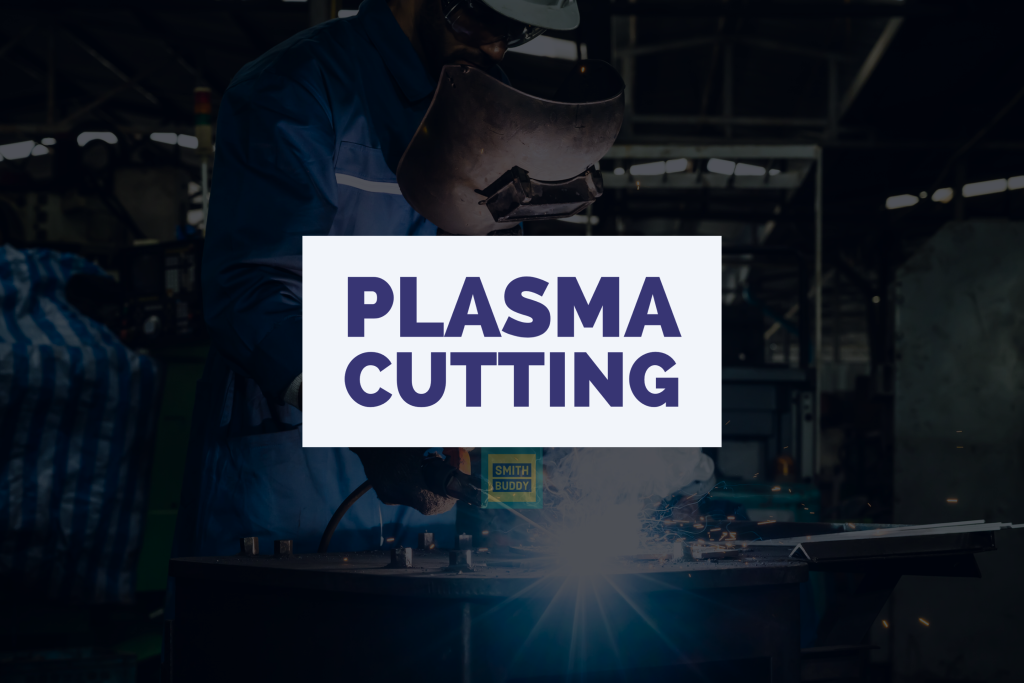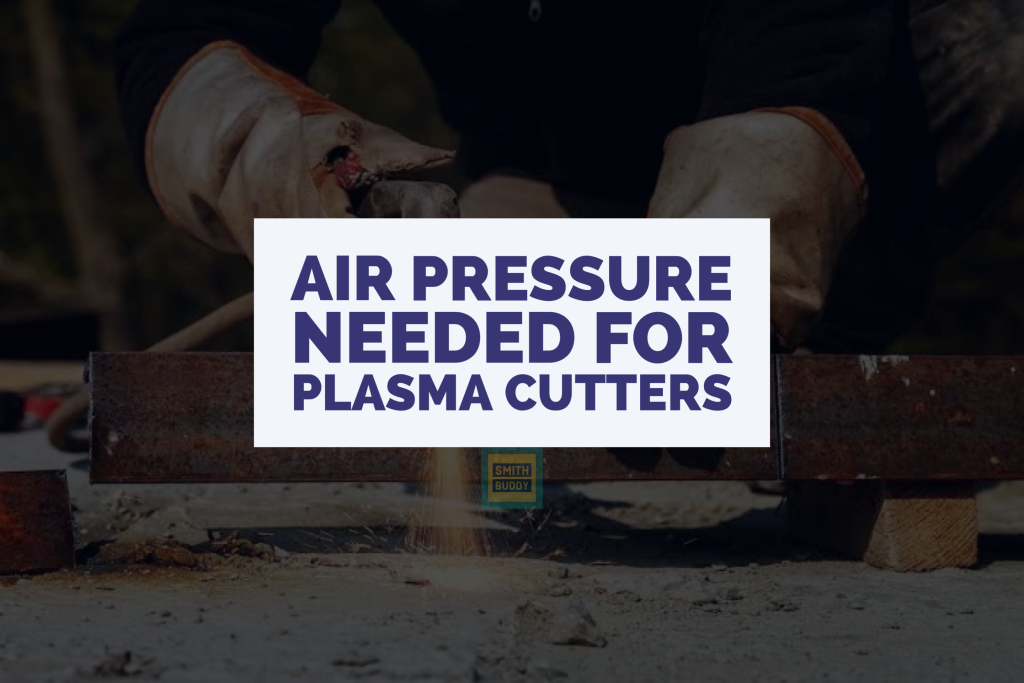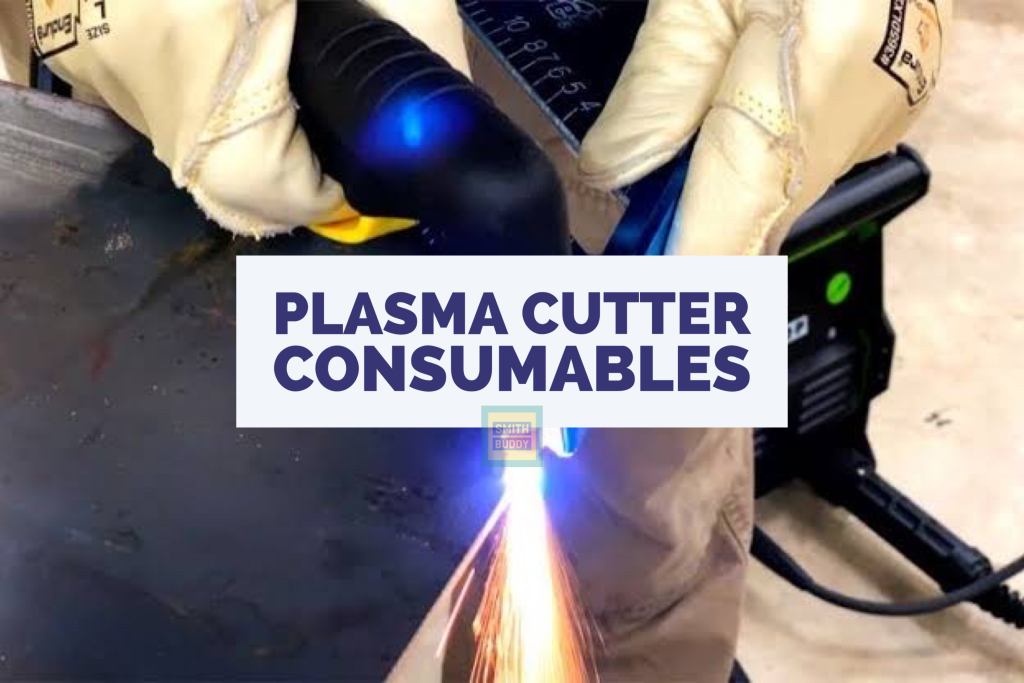Plasma cutters are used to cut metal workpieces. The process involves cutting the metal workpieces with a channel that is extremely heated and empowered by electrically ionized gas.
Plasma, alternatively known as ionized gas appears after heating above 20,000°C. Usually, there were three states of matter Solid, liquid, and gas. The fourth state is called ‘Plasma’
For instance, any piece of butter would become solid if frozen; liquid if firmly heated, and then it will become gas if the heat constantly rises. If the same piece of butter is heated at an extremely high temperature then it would become plasma since the electrons will start to be separated from the nucleus.
If gas is burnt at an insane temperature then the particles within the gas become so energetic that they break apart into positively charged ions and negatively charged electrons. This process is known as ionization and can occur when gas is exposed to high temperatures, high electric fields, and/or high radiation levels.
How do plasma cutters work?
The ionization of gas converts the power into a plasma stream which is then used to cut the metal. Here’s how the plasma cutters work:

The electrical arc is created by a large voltage differential between the electrode and the tip of the torch. The gas used is typically either argon or oxygen, and the arc is directed through a nozzle that focuses the plasma stream. The plasma used for cutting is typically a combination of both gases.
As the arc passes through the nozzle, it accelerates the gas to a high velocity, which then produces a plasma stream of ionized gas that is hot enough to cut through metal.
The plasma cutter can be adjusted to cut through different thicknesses of metal by adjusting the voltage and the gas flow.
Application of Plasma Cutter
Plasma cutters are used for cutting and gouging metal materials, such as steel, stainless steel, aluminum, copper, brass, and other conductive metals.
They can be used to cut intricate shapes, make straight cuts, and create beveled edges in metal.
Also, plasma cutters are an important tool in the fabrication industry, as they are capable of cutting through thick materials quickly and accurately.
Benefits of Plasma Cutting
The followings are the benefits of plasma cutting:

Precision: Plasma cutting is a precise process that can cut intricate shapes with a high degree of accuracy.
Speed: Plasma cutting is much faster than traditional mechanical cutting tools such as hacksaws, grinders, and drills.
Versatility: Plasma cutting can be used on a variety of metals, including steel, stainless steel, aluminum, copper, brass, and titanium.
Cost-effectiveness: Plasma cutting is an economical process since it requires less energy and fewer consumable parts than other cutting methods.
Safety: Plasma cutting is a relatively safe process since it does not generate any dangerous sparks or fumes.
Negative sides of plasma cutting
These are the cons of using plasma cutters over other available cutting methods such as laser cutting.
Expensive Equipment: Plasma-cutting machines require a significant financial investment, and they are not suitable for all budgets.
Limited Thickness: Plasma cutting machines are limited to cutting metal materials up to 1” thick.
Heat Affected Zone: Plasma cutting can cause warping and other distortions to the metal due to the heat generated by the process.
Risk of Fire: Due to the high temperatures used in plasma cutting, there is an increased risk of fire.
Pollution: Plasma cutting produces toxic fumes and smoke, which can have a detrimental effect on the environment.
Components of a plasma cutter?
A plasma cutter typically contains an electrode, a nozzle, a shield or lead, a gas supply, a power supply, and a torch.
The electrode and nozzle are designed to create a high–energy arc that cuts through metal.
The shield or lead is designed to protect the operator from sparks and debris. The gas supply is usually a mixture of air, nitrogen, or argon.
The power supply provides the electrical energy to create the arc.
The torch is the handle that the operator uses to control the plasma cutter.

How thick can a plasma cutter cut?
The thickness of material that can be cut with a plasma cutter depends on the type of plasma cutter being used, the quality of the material being cut, and the quality of the plasma cutter‘s cutting tip.
On average, a quality plasma cutter can cut through material up to 1/2 inch thick. However, some plasma cutters can cut through material up to 2 inches thick.
From our experience – the handheld plasma torches can cut workpieces with a thickness of around 35 mm and the computerized plasma torches can handle around 150 mm. Again, the technology is ever-changing and the future plasma can come up with the ability to cut even more than that.
Thick Metal Cutting Technique
- Proper positioning is very important to cut thick metal with a plasma cutter. We always suggest positioning the plasma torch at exactly the height position as per the cut chart.
- If you are cutting thick metal with a rough edge, try to place the torch at the center line at 6 mm from the workpiece edge.
- Allow the arc to give the workpiece a motion delay so that the plasma breaks the component gradually.
- Try to cut the initial 1 inch at 75% of the torch power and restart the cutting process. It will allow you the understand the need to adjust the motion delay & torch power.
- Maintain the edge to round the corners at 90 degrees or lesser. You may allow a one-second extra motion delay in the corner so that the arc can catch up with the stream. Slow down the power and working speed before 35mm from reaching the corner. It will help you in creating the perfect angle.
Tip: Use an air compressor so that the plasma cutter brings you the finest & most precise cut.

Here are the correction factors for overshooting at the kerf edge:
| Thickness | Kerf | Correction Factor |
| 5 inches (125 mm) | 0.530 inches (13.43 mm) | 0.30 |
| 6 inches (150 mm) | 0.680 inches (17.27 mm) | 0.25 |
| 6.25 inches (160 mm) | 0.700 inches (17.78 mm) | 0.25 |
Data Source: Hypertherm Cutting
How Plasma Cutter was invented?
As per Wikipedia, Plasma cutting is an innovation of 1960 and later on, it grew massively. When the industry grew right after the second world war, plasma cutting contributed a lot until the innovation of CNC plasma in 1980 – 1990.
The first plasma cutter was invented in the 1950s by a team of physicists at the U.S. Naval Research Laboratory. It was initially used as a way to cut through metal for aerospace and military applications. The plasma cutter operates by using an electrical arc to heat a gas, such as oxygen, nitrogen, or argon, to an extremely high temperature. This causes the gas to ionize and form a plasma, which is then used to cut through metal. Plasma cutters have since become an essential tool for a wide variety of industrial, automotive, and home repair applications.
Differences between Handheld Plasma & CNC Plasma
These are the key differentiation area of handheld plasma & CNC plasma:

Handheld plasma cutters are manually operated and generally used in light-duty applications such as thin metal sheets and other light materials, while CNC plasma cutters are computer–controlled and used for heavier–duty applications such as cutting thicker metal sheets and other thicker materials.
Handheld plasma cutters are typically less expensive than CNC plasma cutters, as less technology and automation is used.
Handheld plasma cutters are more portable and easier to use, while CNC plasma cutters offer greater accuracy and precision in cutting.
Handheld plasma cutters are generally limited to smaller projects and less intricate designs, while CNC plasma cutters can be used for larger, more intricate designs.
What is Inverter Plasma Cutter?
Inverter plasma cutter is a type of plasma-cutting technology that uses inverter technology as its power source. This type of plasma cutter is smaller and lighter than traditional plasma cutters.
It also runs at a higher frequency, allowing for faster and more precise cutting, as well as better control of the cutting process. Inverter plasma cutters are generally easier to use, require less maintenance, and require less energy to operate than traditional plasma cutters.
Final Thought
The plasma cutter is a powerful and versatile tool that can be used in a variety of applications. It is capable of cutting through a wide range of materials quickly and accurately, making it an invaluable tool to have in any workshop. With proper use and maintenance, a plasma cutter can give you years of reliable performance. Whether you need to make quick cuts or intricate designs, the plasma cutter is a must–have for any serious hobbyist or professional.





